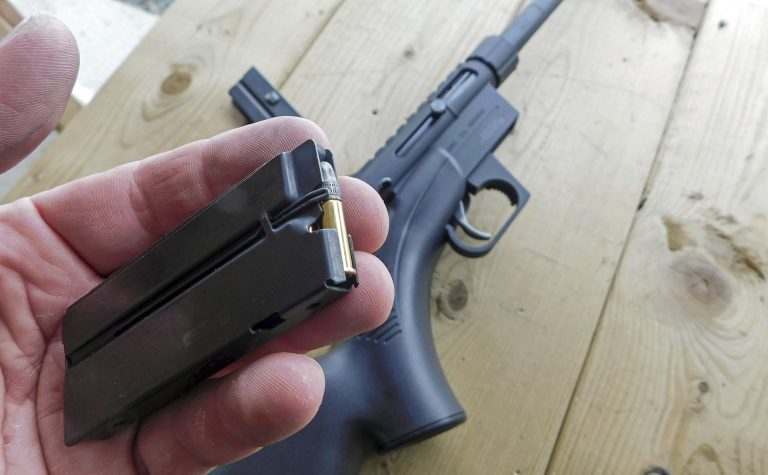
At the time of writing, most Canadians’ AR-platform rifles are still on the chopping block, thanks to the Liberal government’s Order in Council. But, there is one AR left out there that you can still buy. It’s non-restricted, even, and has a cool quasi-military backstory. And it’s super-affordable to shoot.
I’m talking about the AR-7 survival rifle, currently sold by Henry Repeating Arms as the U.S. Survival AR-7. Designed by Eugene Stoner himself in 1959, when he worked for ArmaLite, this gun has an interesting history, and it’s fun to shoot.
I’ve been fascinated by these little .22s ever since I was a kid, when I first saw them in the King Sol’s Army-Navy surplus catalog. The old black-and-white drawings inspired daydreams of a life as a pith-hatted jungle explorer, fighting off jaguars with my trusty semi-auto. When I got my PAL much later in life, my dreams of an Indiana Jones existence were long-gone, but I was still curious about the rifle and bought one about a decade ago.
The first AR-7 I bought was built by Henry, one of the company’s early-production models after buying the production rights from Charter Arms (who manufactured the rifle after ArmaLite’s production run). It was inaccurate, and it jammed a lot--basically all the things that I was warned about. Eventually, I moved it on.
And yet, it was a fun rifle to shoot. After reading much about Henry’s mid-production re-design of the rifle, I decided it was worth the gamble to give the U.S. Survival AR-7 one more try. Turns out it was a good idea, as the Henry re-design makes it a much more workable firearm.
Ch-ch-ch- changes
When Henry purchased the AR-7 production rights from Charter Arms, it didn’t purchase any machinery. Henry said it wanted to make significant changes to the design, so it started from the ground up, building new tooling for the manufacturing process. In other words, the original Henry design had some big differences from the Charter Arms version.
The mid-production redesign does the same thing again, and several of those changes were immediately noticeable as I assembled the rifle.
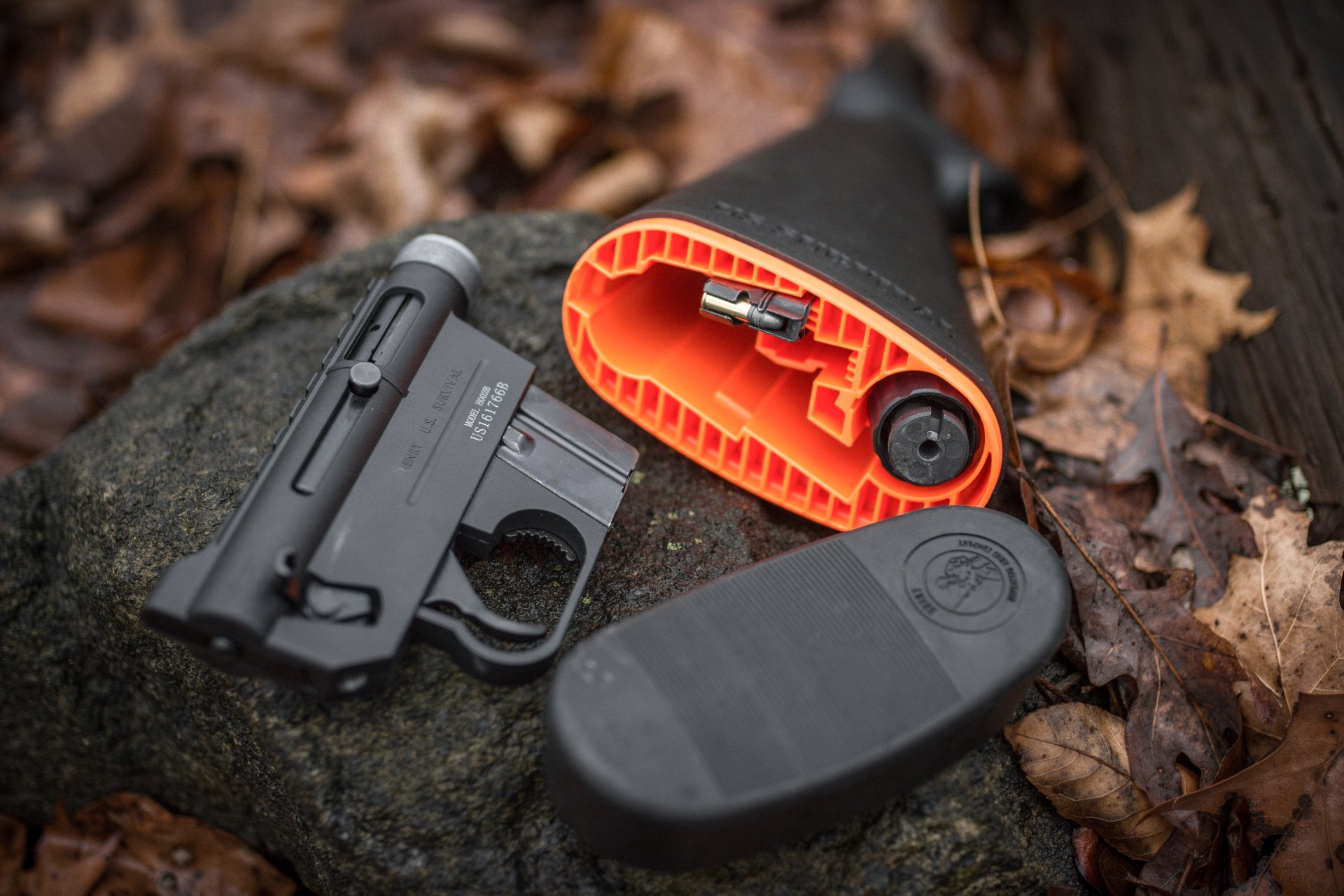
The latest AR-7 design is basically the same as the original ArmaLite version. The barrel, action, and magazines store inside the ABS stock. To fire the rifle, you pop the buttpad off the stock, remove the components and assemble them.
Right away, I noticed the new version’s buttpad fits the rifle very tightly (at least, it does so when new), but it’s more flimsy than the previous version. It also appears to be less leakproof, although I never float-tested my old-production version to do a proper comparison. Given the common idea that “these rifles were made to float,” that might be a problem for some. Personally, I think that’s silly; these rifles would sink like a stone if they fell out of a canoe in a backpack, where they’d likely be stored anyway. Still, this could be a factor for some buyers.
Henry itself says the stock is actually beefier now, less prone to breakage than earlier design. It does seem more solid, but I didn’t beat it against a fencepost to find out for sure.
On to the other changes. There’s a new plastic, high-viz orange front sight. The old dovetail scope rail is replaced by … a dovetail scope rail that’s notched, to look like a Picatinny rail. I’m baffled as to why there’s a scope rail on this rifle at all, as you can’t stow a scope rifle inside the buttstock, which surely is the main reason to buy this in the first place? So, while it’s unfortunate to see Henry still doesn’t have a real Picatinny rail here, I don’t think it matters.
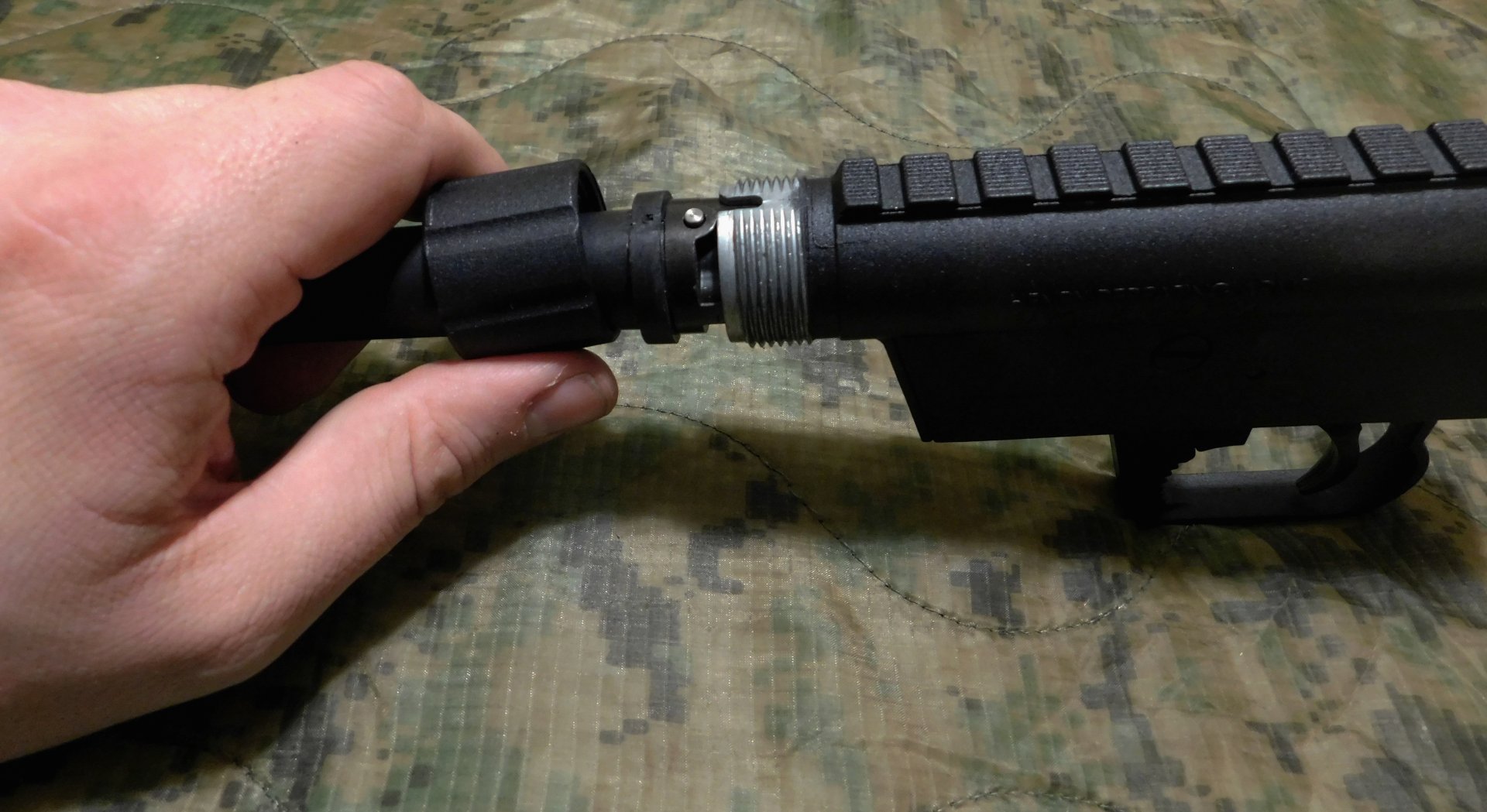
Henry also made some tweaks to the magazine design, to improve feeding, and put a slot in the bolt, allowing the handle to be removed via a hole on the side of the receiver. Previously, users had to disassemble the rifle’s sideplate to remove the bolt, and there were many complaints that it caused a jumbled mess. This isn’t the case anymore.
And finally, maybe the most important change: There’s a stud on the top of the barrel that slides into a notch on the front of the receiver, to make sure the barrel is aligned properly with the receiver. On my old Henry, that stud was made of plastic, and it wore down over time. That would have created accuracy problems in the long term. On the new Henry rifle, that barrel location stud is made from metal, so it won’t wear out.
How does it shoot?
The older AR-7s mostly had a reputation for inaccuracy, but I’d heard the newer version was better. After some range time, I’d have to say the rumours are true. This newer model is definitely a better shooter than the older Henry I owned.
I think the problem many shooters have with the AR-7 is, it looks like it should be an accurate rifle. That free-floated barrel combined with semi-tactical looks implies a capability that isn’t there.
But, the AR-7 was never designed to be a tack driver. Eugene Stoner built a rifle for air crash survivors to hunt for food, and the AR-7 will do that job just fine.
During one range visit, I ran a test of seven commonly-available .22lr loads. Generally speaking, the round-nosed lead bullet loads shot the best, and the faster rounds cycled the action best. Henry recommends use of high-velocity or hyper-velocity ammo; I found CCI Mini-Mags were very reliable, but not as accurate as CCI Standard Velocity. Unfortunately, the Standard Velocity didn’t have enough jam to reliably cycle the action, with a fail-to-extract jam in almost every 8-round magazine.
The ammo that worked the best? Good old Blazer. Blazer was as accurate as anything else, and never failed to cycle the action.
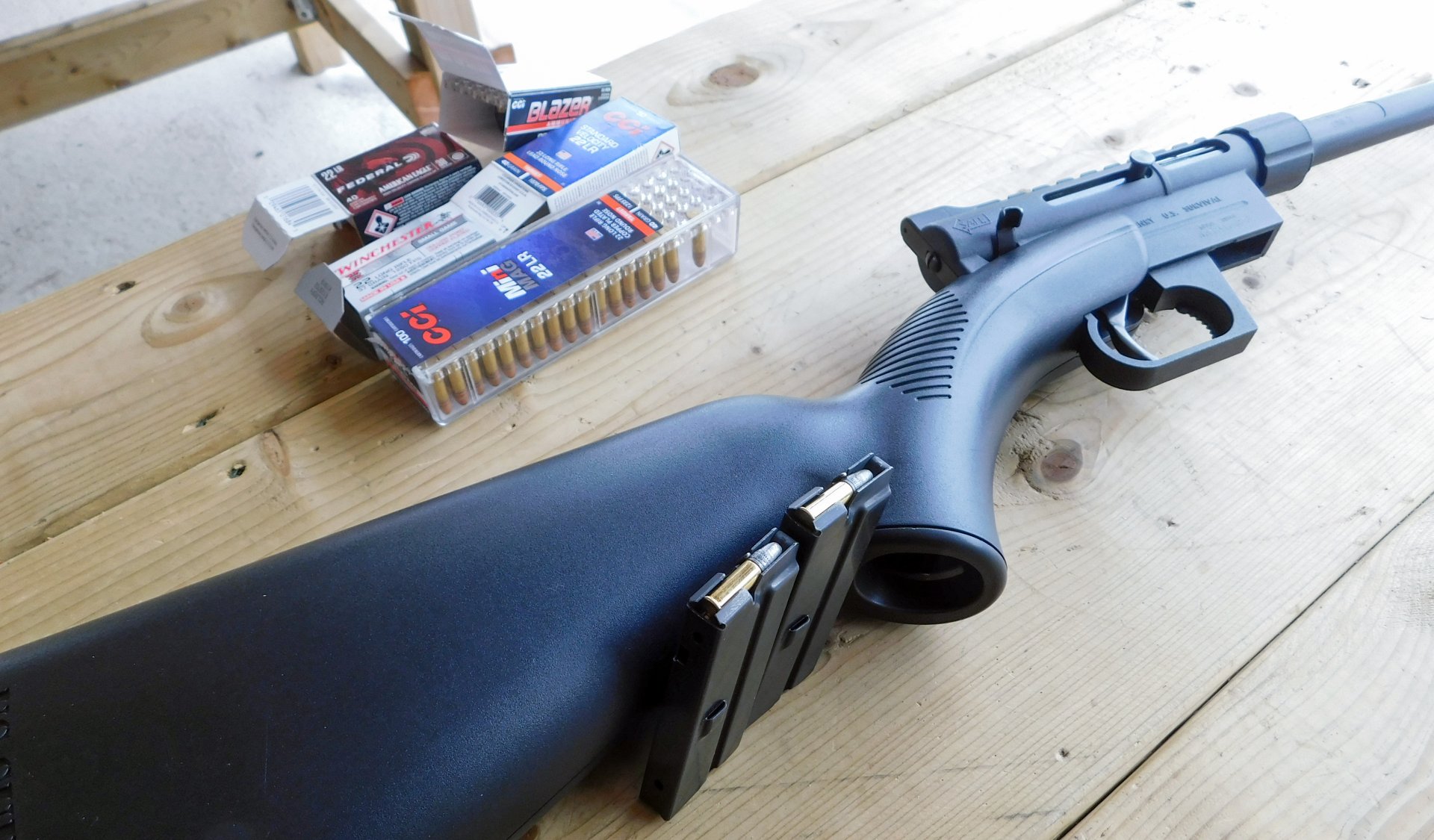
Of course, take this all with a grain of salt--buy one of these, and you may find your Henry hates Blazer, or jams on Mini-Mags, or whatever. However, I was most pleased to find that one of the most common budget rounds also happened to shoot very well.
To me, shooting at a standard sighting-in target was only half of the test, though. Practically speaking, survival rifles need to manage head shots on small animals. So, I tacked up some small game targets, roughly the same size and shape as a snowshoe hare.
Shooting from a rest at 25 yards, head shots were no problem. Same for heart-lung shots. Obviously, a downed pilot wouldn’t have the luxury of a shooting bench in the middle of the woods, but there’s usually a tree to brace against, or something--someone who’s hungry enough will quickly figure that problem out. And at 2.5ish pounds, it’s not as if the Henry is a heavy rifle to hold steady, either.
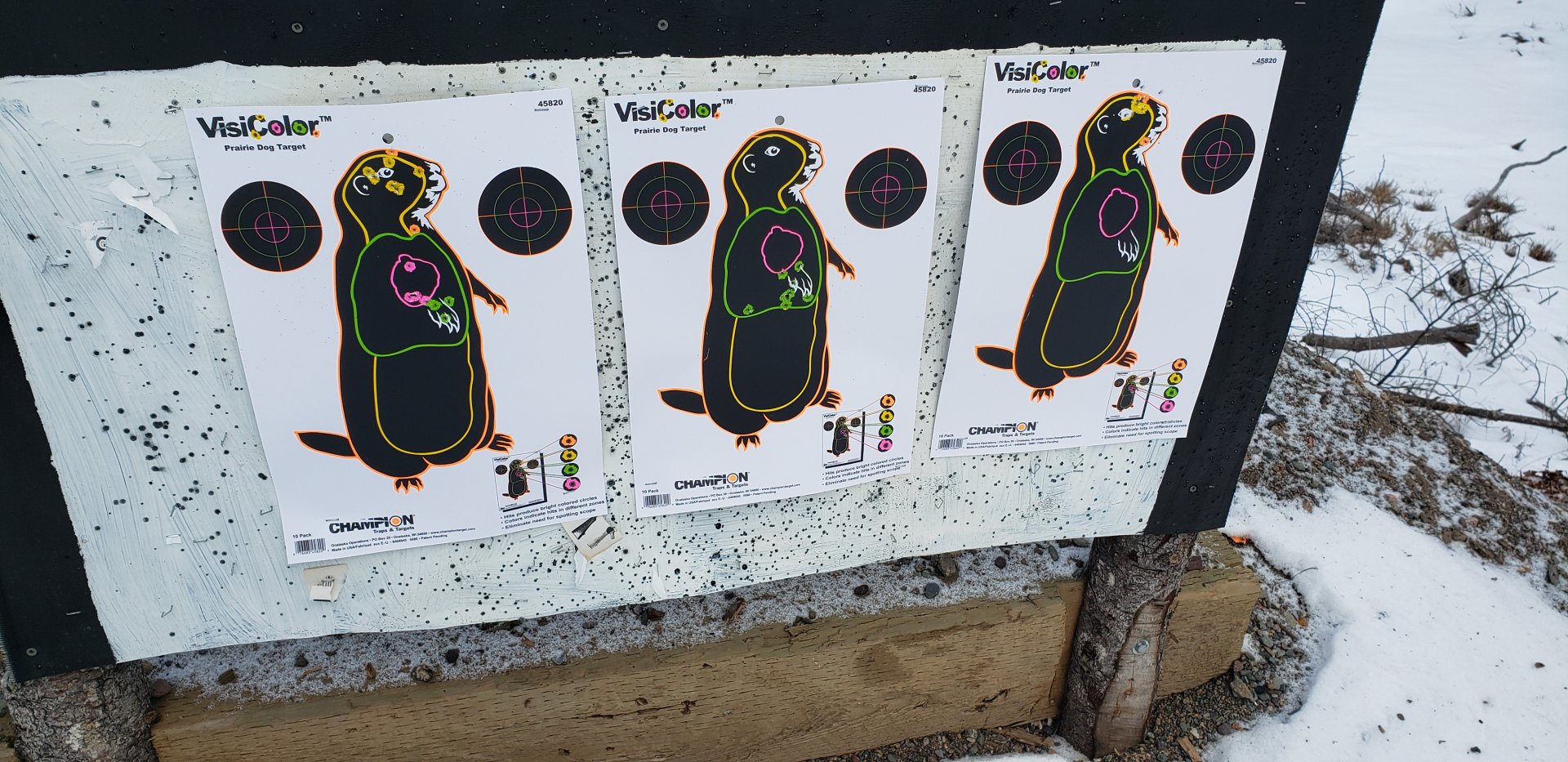
I shot with the reversible peep sight set at its more open setting. Flip the sight upside-down, and there’s a smaller peep, which in theory allows more accuracy, but I suspect it would prove impractical in dark, wooded areas.
Some closing thoughts
Henry’s upgrades make this clever little semi-auto a much more useful gun than before, and should prolong its lifespan. These aren’t made to be high-volume shooters, but if something breaks, it’s certainly easy to replace. There are still some chintzy parts, like the plastic spring guide inside the action, but I’ve never actually heard of one wearing out. Plus, Henry has a lifetime warranty on these things. If something breaks when it shouldn’t, generally they have a reputation for excellent service.
Would I want to trust my life to one, in a survival situation? Having fooled around with similar .22s for several years, I think the AR-7 has a few advantages over some other takedown rifles on the market. It’s a repeater, unlike the straight-shooting Chiappa Lil’ Badger. It’s a bit less money than the Ruger 10/22 Takedown. It’s far more compact than the pump-action Winchester 62 and its Brazilian copies. Thanks to its design, the AR-7 is easy to store. The Teflon finish on the barrel means you don’t have to worry about it rusting when not being used.
So, yeah, I think it would work. It shoots well enough, and with the right ammo, it seems reliable enough. But even if you aren’t flying over the wilderness in northern British Columbia, this is a very fun-to-shoot rimfire; its light weight means that with more powerful .22 cartridges, you get the faintest hint of recoil. The Henry redesign seems to have come with improved fit-and-finish. The trigger is better on this rifle than on the one I owned years ago, the mags are better-made, the safety has a smooth-positive click. It’s a much nicer rifle.
So, if you’re ok with a rimfire that won’t shoot cloverleafs at 25 years, you might want to check it out. I know I’m far more impressed with Henry’s second go at the AR-7; now, I’m just wishing they’d make a straight-pull bolt-action version in .22 magnum, or even better, .22 Hornet.